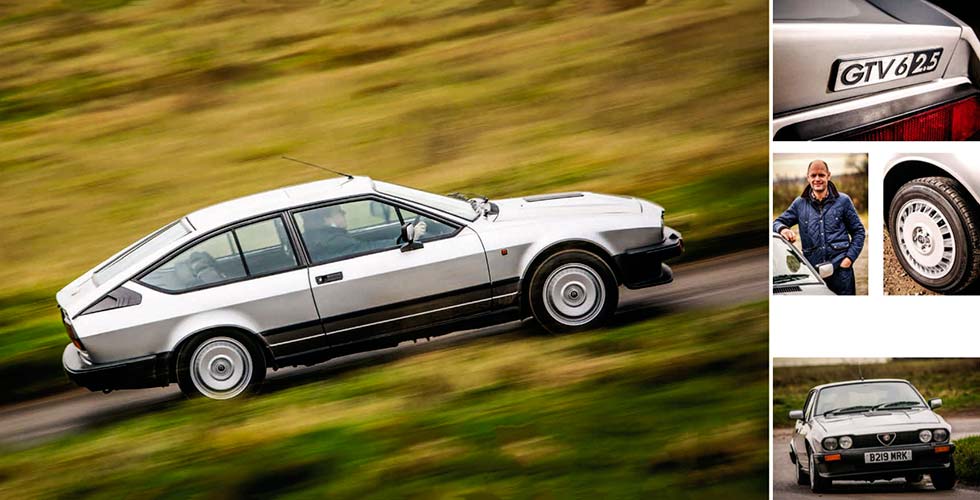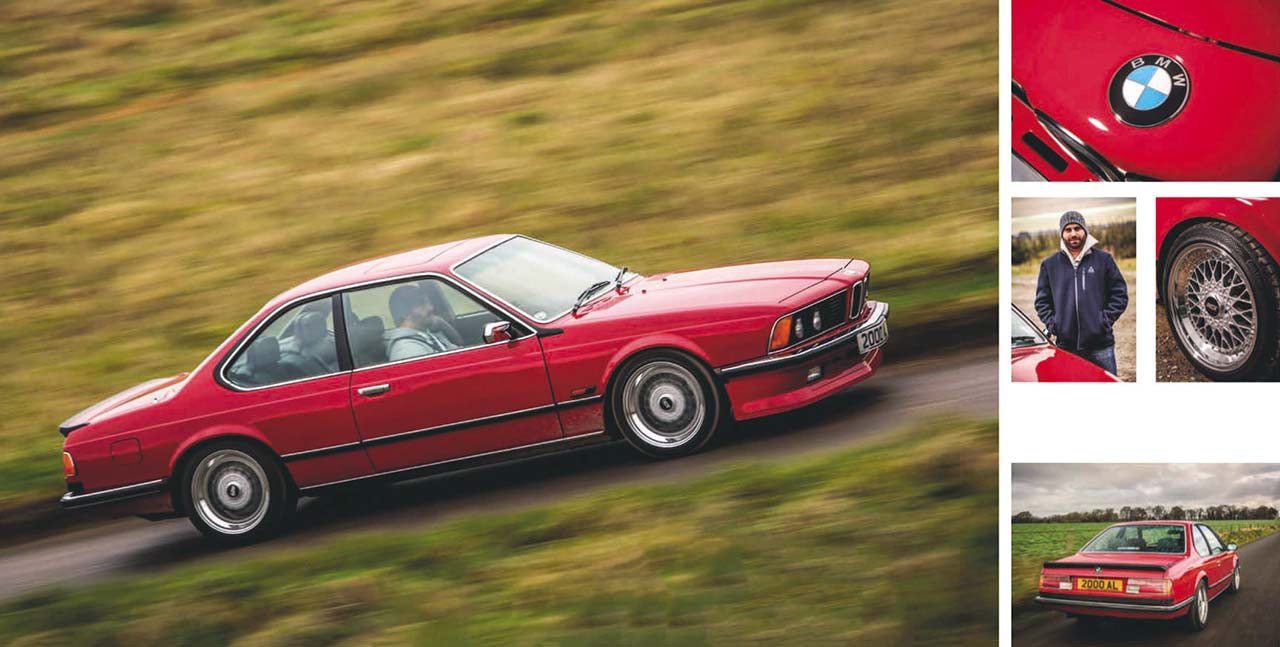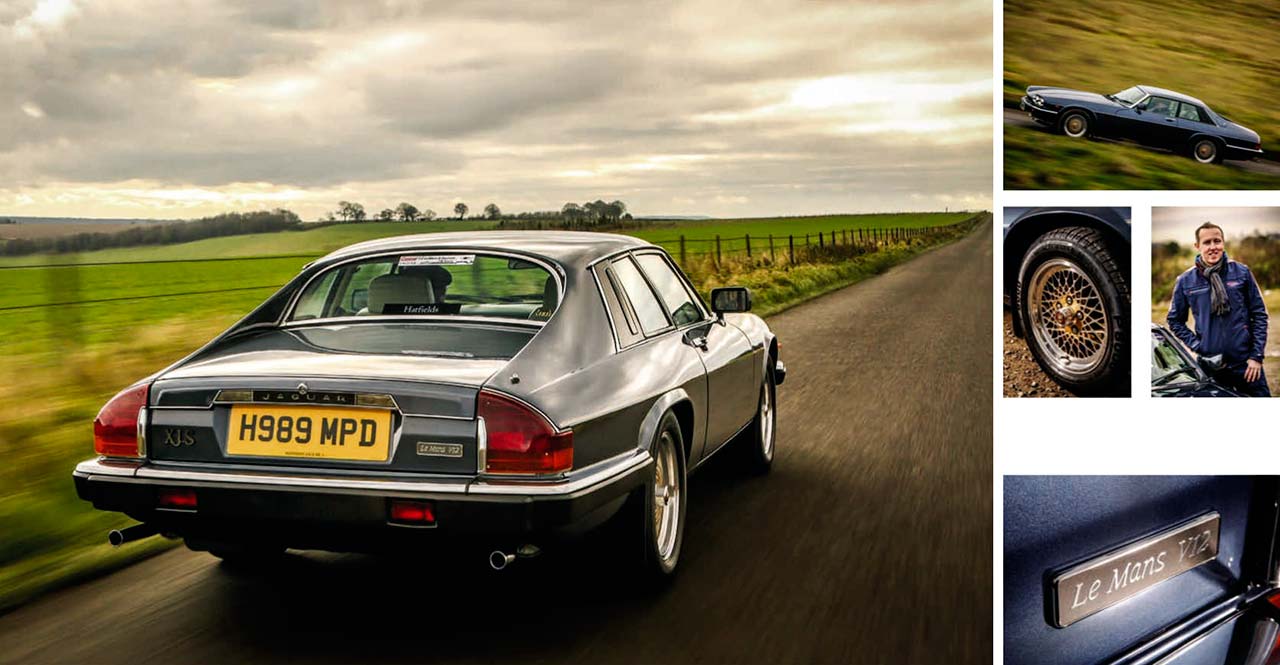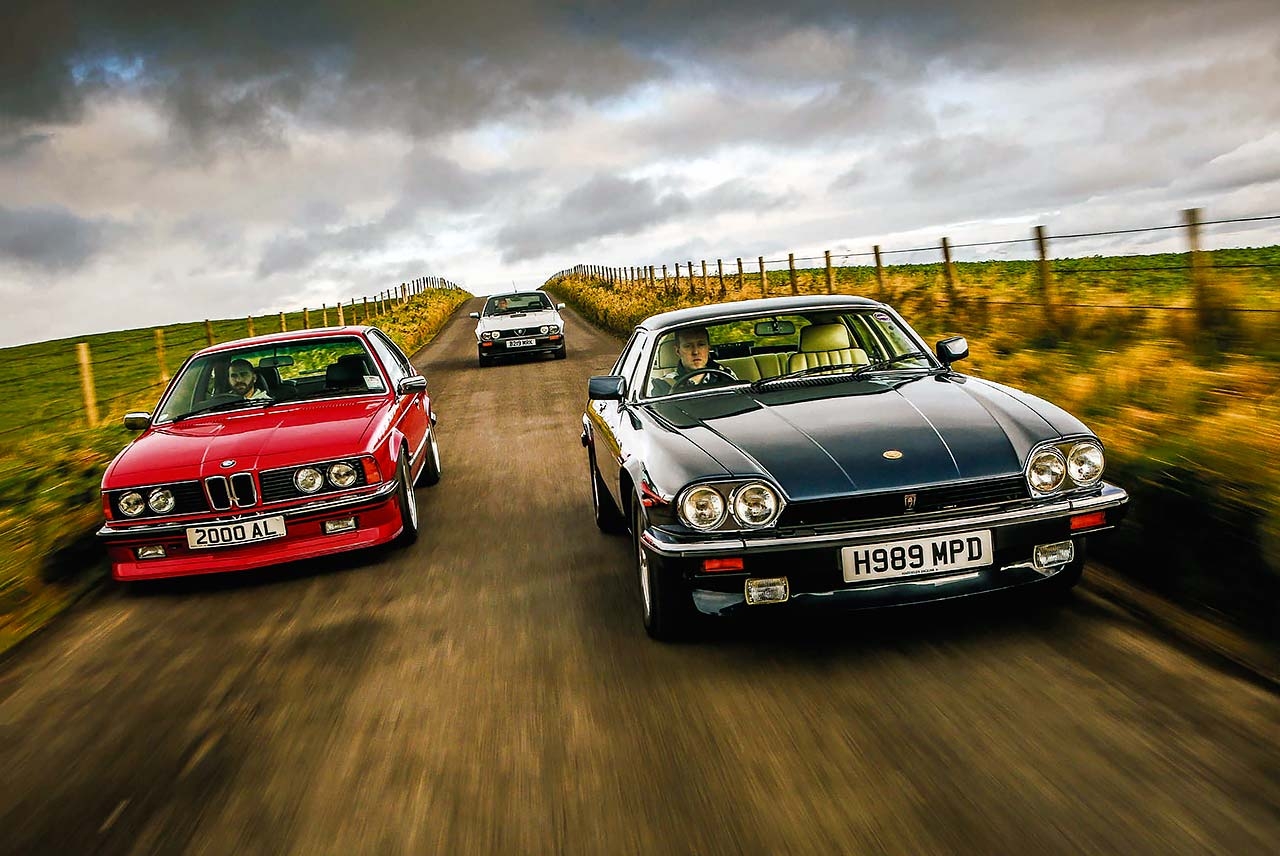
To the track… and back. These luxury GTs made unlikely racers, says Simon Charlesworth, yet all three enjoyed Touring Car success. But which is best? Photography Tony Baker.
BMW vs Jag vs Alfa European Touring Car stars compared as 635CSi E24 battles XJ-S and GTV6
These three GTs share a great deal. All are mid-’70s designs, with DNA from their saloon brethren, and all achieved success in the European Touring Car Championship in the early 1980s. Yet to look at their styling and their mechanical specifications, it would be hard to envisage more variety when distributing 24 cylinders and 12 headlamps among three rear-drive 2+2 bodies. This is a salute to when the ETCC featured battling coupés, drifting and howling their way to chequered-flag glory. To a time before Touring Cars became too homologated, a bit too ordinary and family-friendly.
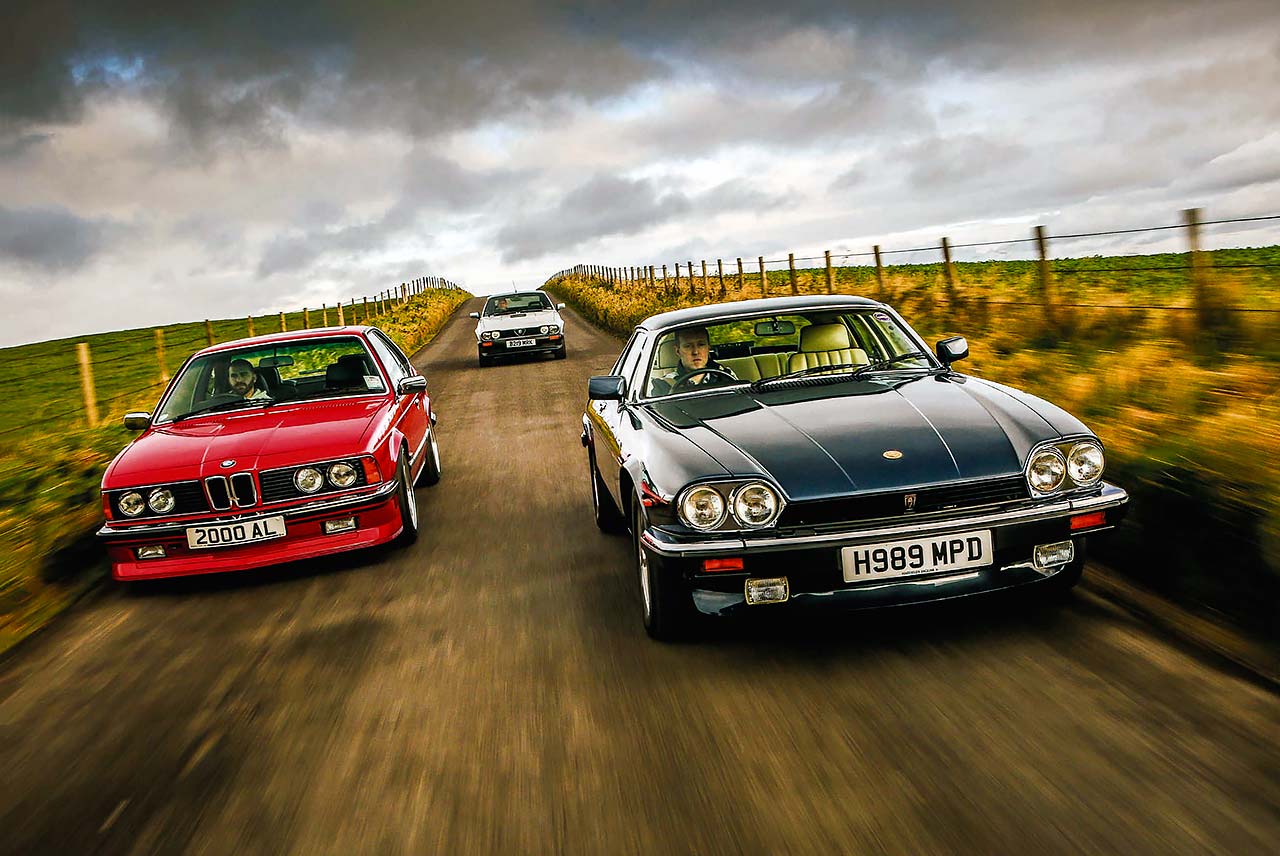
The ETCC was born in 1963 as a Europe-wide competition. Christened the European Touring Car Challenge – becoming the more familiar ‘Championship’ in 1970 – it would run successfully via many regulation changes until 1988, when soaring costs ended play.
The car with the deepest roots is the Alfa Romeo GTV6, which can trace them back to the 1974 Alfetta GT. Although ‘Alfetta’ badging could not be found on the GTs, all mention of that name was dropped for the 1980 facelift. The GTV 2.0 was fitted with raised impact bumpers, front spoiler, Campagnolo alloys, single-piece rear lights and other very ’80s touches. Later in the year the GTV 2.0 was joined by the GTV6, which provided a more appropriate home for Giuseppe Busso’s by then fuel-injected 2492cc V6 – an engine that had previously been lumbered with six carburettors in the Alfa 6.
Giugiaro’s angular, wedge-like coupé toys with awkwardness – but even to the lust-laden eyes of Alfisti, this Alfa is not conventionally good-looking. It was the first to embark on an eccentric aesthetic that would culminate in the deliciously doolally SZ. Yet, dressed in silver with its power bulge and restrained alloys, this smart-casual Alfa intrigues, seduces and ultimately massages away any misgivings.
Following its 1982 ETCC debut, the GTV6 built on Alfa’s enviable racing record. The company’s tally of manufacturers’ titles was already healthy: there were the Tipo 105 GTA’s Division 2 gongs from the Challenge era (1966, ’1967 and ’1969), plus its back-to-back wins in 1971 and 1972. After Autodelta’s brief, intermittent and unsuccessful experiment with the Alfetta berlina in 1973, two further titles came in 1976 (with the 1300GTA Junior in D1 and the Alfetta GT winning D2), followed in 1977 by a D1 win courtesy of the 1300GT Junior and Alfasud Sprint. GTV6s were popular and run by numerous teams: Alfa Romeo Deutschland, Luigi Racing, Scuderia Autoldi Corse, Jolly Club Milano, Biesse Racing Team and Imberti. All of which helped Alfa to win D2 for four years in succession from 1982 to 1985.
Launched in 1975 to replace the V12 E-type, the Jaguar XJ-S is the Alfa’s junior by a year but it’s certainly the more contentious. The buttresstailed, hammer-headed design – a blend of work by Malcolm Sayer, Sir William Lyons and Doug Thorpe – remains controversial for some, while for others it will conjure the staccato synth, flaring sax and panting wah-wah pedal of the Return of the Saint theme. Targeting wealthier, older customers, the refined XJ-S utilised much XJ6 hardware – but was wider, longer, lighter and had a shorter wheelbase than the XJ12C.
Alas, through no fault of its own, the XJ-S’s timing couldn’t have been worse. It was launched into the wake of the 1973 oil crisis, environmentalists were increasing in sandal-count, and an energy crisis would later strike in 1979. Understandably, demand for a 12mpg GT wasn’t what it once had been. Sales dwindled, production slowed to a dribble (just 14,890 between 1975 and 1981) and the Grim Reaper stirred.
The 1981 XJ-S HE, with its more powerful and more efficient motor, saved the XJ-S. Developed by Harry Mundy and his team, the ‘High Efficiency’ V12 featured a new ‘Fireball’ cylinder head devised by Michael May. This generated more torque (up 24lb ft), improved power (up 14bhp) and lifted claimed out-of-town fuel consumption to above 20mpg.
The XJ-S slipped into the ETCC in 1982, following the introduction of the FIA’s new Group A/B/C classification. During its career, Tom Walkinshaw and his GpA TWR Jaguar would gain in reliability, victories and success in the standings. Walkinshaw initially managed third in the 1982 drivers’ championship (fifth in the manufacturers’ honours), followed by second in 1983 (fourth in the manufacturers’). After he and Hans Heyer scored four wins and three podium finishes, the pair secured the 1984 drivers’ title, with Jaguar finishing second in the manufacturers’ championship.
Success achieved, the XJ-S retired from the ETCC – although it would still race in certain Australasian GpA races until 1986. Meanwhile, Jaguar and TWR would focus on Group C sports-prototypes and a return to Le Mans. It’s up to rational BMW to sidestep quizzical design cues and motorsport drivetrains. The work of Paul Bracq, the 1976 E24 6 Series is the youngest design here and one of BMW’s most subtle. Like the XJ-S, it represented a shift from its E9 predecessor’s high-octane excitability towards greater refinement.
At launch, the range-topper was the 633CSi, which came in for criticism regarding its weight, price and lack of sporting mojo – and it wasn’t helped by the fact that the 3.0 CSL E9 was still out there bloodying noses in the ETCC. Enter, in 1977, the sharper, keener 635CSi, powered by a 12-valve, single-overhead-cam, 3455cc M90 straight-six, and wearing chin and boot spoilers that were both deftly incorporated into the E24’s overall look – unlike the CSL’s more ostentatious aerodynamic paraphernalia.
Ultimately, the 635CSi would be outgunned when the E26 M1’s twin-cam, 24-valve M88 ‘six’ was fitted to the E24 to create the M635CSi, but that model never experienced the ETCC success achieved by the 12-valver. As with Alfa, a BMW was on the ETCC entry list from the beginning in 1963, initially represented by the 700, moving on to the 1800Ti/TiSA, 2002/tiK and 1600 before the E9 coupé gained D3 success in 1972.
At first it was the 2800 CS E9, run by équipes such as Alpina and Schnitzer, before in ’1973 they were joined by the factory team to field the immortal 3.0 CSL, a car that became so used to winning it only retired when homologation was withdrawn in 1980. That very year, the 635CSi made its D5 debut with Racing Corporation Vienna. In its first event at Monza, the Harald Neger, Heribert Werginz and Umberto Grano CSi would win – the first of four for the team, helping to earn BMW third in the manufacturers’ standings.
Like the GTV6 – and unlike the XJ-S – the 635CSi would win multiple titles; unlike Alfa Romeo – and like Jaguar – BMW would also take victory in the drivers’ championship, with the Eggenberger Motorsport pairing of Umberto Grano and Helmut Kelleners winning in 1981.
Schnitzer’s Dieter Quester took the 1983 title, and Roberto Ravaglia won in ’1986 before the 635 was replaced by the most successful GpA racer of all, the M3. Meanwhile, the E24’s place in BMW’s range – and enthusiasts’ hearts – would be left vacant when production halted in 1989. Alfa specialist Alex Jupe has brought along a 1984 GTV6 that he is selling for a customer.
This 68,000 mile example is both original and unrestored – although the inner wing tops and the front wing bottoms have been repaired. Indeed, its originality includes OE single-action dampers, suspension geometry and the twin-plate clutch that became infamous for lasting as little as 30,000 miles in grinding traffic.
Given my own Alfetta berlina ownership, there are surprisingly few cabin fittings that chime with familiarity. The seat is new and lower; the dash and instruments are different. Interior door releases? Vents? Rear-view mirror? Fan controls? Nope, not a salsiccia.
Each transaxle gearchange is an individual: selecting second is always gristly to a lesser or greater extent. The trouble is that there is a vast difference between the light, sensitive throttle and the beefy clutch, which is both long of travel and engages like a booby-trap. The knack eludes me and I ride, slip ’n’ slide, over-rev and then, feeling sheepish, head for the BMW…
Kos Loizou’s 1986 635CSi E24 is the first of two cars here that have been paternal hand-me-downs. The CSi’s use gradually dwindled until it was stored in 2000. Then, in 2007, as rust began to sprout, Kos acquired the keys, dismantled the BMW, repaired the rot and had it resprayed. In 2010, the 635 gained new period alloys (auf wiedersehen original metric tyres), rebuilt suspension, and was upgraded to Alpina spec. It also now wears a deeper M635CSi front spoiler.
The cabin is trimmed and equipped with precise logic and ergonomic clarity. There is only one flaw, which it shares with many autos: should you wish to hold a gear, the numbers are sited for left-hand drive. Place your hand on the T-selector and the figures are perfectly obscured. Instead, it’s easier to let the large ‘six’ and four-speeder get on with it – with the 6100rpm redline no doubt breathing a sigh of relief.
The assisted ZF ball-and-nut steering is superb: well geared and juicily weighted. Turn in, front-end grip, the ZF auto’s sport-mode responses and the muted M90’s muscular torque are easy to take for granted when cruising at 70mph, at a mere 2200rpm. A manual would, of course, bring greater sparkle (and a limited-slip diff), but alas, many were lost in action.
The move from the CSi’s glassy solemnity and rationality to the endearingly higgledy-piggledy XJ-S cabin provides a stark contrast. Sitting snugly between the large transmission tunnel and girder-like sill, the shallow glasshouse and fittings make it feel as if you’re lounging in a despot’s bunker, while out there lies a bonnet big enough to warrant its own postcode.
Simon Williams’ XJ-S is a 1991 Le Mans V12 model, a limited edition of 280 cars built to commemorate Jaguar’s win at the previous year’s 24 Hours race. Its distinguishing features are most obvious from the front – twin round headlamps, an all-black grille, colour-coded chin spoiler and door mirrors, plus a gold bonnet badge and coachlines down the flanks. It also has 16in lattice alloys, sports suspension, embossed Autolux seats with piping colour co-ordinated to one of four exterior colours, plus Wilton carpet and a numbered plaque on the sill. Beautifully preserved, the 77,000-mile car – which used to be his father’s – has not been restored.
You check with the tacho that the famously hushed V12 is running: I’ve encountered librarians more boisterous than this. The refinement of the engine and three-speed auto make acceleration feel as if a distant tractor-beam is reeling you in. Williams notices that the gearbox kicks down, but to be truthful I’m more likely to spot a reverse fleckerl on Strictly Come Dancing. The drivetrain is seamless; the whispering 289bhp Jaguar somehow just gets faster.
Admittedly the XJ-S suffers from its superlight XJ steering. The rack is overly assisted and muted, feeling disconnected on turn-in and relaying little through the corner itself. This Le Mans model’s firmer suspension (a ‘touring’ set-up was a no-cost option) brings an unfamiliar guest to the party. Doubtless the grip and body control are quantifiably improved, but the ride loses some of its pampering sophistication at lower speeds. It’s as if there are a few rucks in the underlay beneath that fabled magic carpet.
Such is the XJ-S’s charm that I’ll happily leave behind my steering obsession. This relaxing antidote to road rage is just too wonderfully charismatic and individual to dismiss. Cold-cut objectivity, however, dictates that the BMW must win. Its faultless driving position and near-perfect ergonomics, a chassis equally capable of cruising or bruising, its sense of solidity, unimpeded outward visibility, chunky performance and subtle shark-nosed good looks turn it into a classic GT. It’s a car that blends both the Alfa’s sportiness with the Jaguar’s refinement – without the need for any excuses.
So there. That’s it. If you’re a normal, sane human being, this is the end. Retire with your rationality and read no further.
However, the Milanese contagion compels me to revisit the GTV6, and to understand it. Somehow, I no longer notice the legs-akimbo driving position. The tactile wheel eagerly imparts the steering’s tittle-tattle. All around may be ergonomic ineptitude, but the rev counter is perfectly located. Hands and feet tune in to the gearchange and pedals. No more slipping and slurring to obstruct this slim-hipped Alfa’s allure. The compliant suspension, optimised weight distribution and athletic turn-in all begin to flow – but this is just the support act.
The headliner is its glorious sei-vu engine. Up to 3000rpm there is little to discuss, but above and beyond… oh boy! As the needle passes 4000 and then 5000 revs – stretching for the 5750rpm redline – it loses its hubbly-bubbly gargle. Its throat clears, evolving into a clean, musical howl that grows in volume and richness. Another gear, another encore. On paper this might be the slowest car here – both in ultimate speed and the sprint from rest to 60mph – but I really can’t think of another mass-produced V6 with a more emotive soundtrack.
I’m disgracefully smitten. Too busy to notice that – somewhere during the smiles, the shimmering, winding tarmac, the dips and crests – my exasperated impartiality slowly and solemnly reached for its pearl-handled revolver.
Thanks to all of the owners. The GTV6 is for sale with Alex Jupe Motorsport: 01243 575760
Tech photos
‘THIS SMART-CASUAL ALFA INTRIGUES, AND ULTIMATELY MASSAGES AWAY ANY MISGIVINGS’
‘YOU NEED TO CHECK THE V12 IS RUNNING – I’VE MET LIBRARIANS MORE BOISTEROUS THAN THIS’
‘THE MUTED M90 ENGINE’S MUSCULAR TORQUE IS EASY TO TAKE FOR GRANTED’
TECHNICAL DATA FILE SPECIFICATIONS ALFA ROMEO GTV6
Sold/number built 1980-’1987/22,380
Construction steel monocoque
Engine all-alloy, sohc-per-bank 2492cc V6, with electronic fuel injection
Max power 160bhp @ 6000rpm / DIN
Max torque 157lb ft @ 4000rpm / DIN
Transmission five-speed manual transaxle, RWD
Suspension: front independent, by double wishbones, torsion bars, telescopic dampers, anti-roll bar rear de Dion axle, trailing arms, coil springs, telescopic dampers, anti-roll bar
Steering rack and pinion
Brakes discs (inboard at rear), with servo
Length 13ft 9in (4191mm)
Width 5ft 5in (1651mm)
Height 4ft 4 ¼ in (1328mm)
Wheelbase 7ft 11in (2413mm)
Weight 2610lb (1184kg)
0-60mph 8.2 secs
Top speed 128mph
Mpg 23
Price new £9495
Price now £12-22,000
{module Alfa Romeo Alfetta GTV Club}
TECHNICAL DATA FILE SPECIFICATIONS JAGUAR XJ-S HE
Sold/number built 1981-’1991/46,895
Construction steel monocoque
Engine all-alloy, sohc-per-bank 5344cc V12,
with electronic fuel injection
Max power 289bhp @ 5500rpm / DIN
Max torque 318lb ft @ 3000rpm / DIN
Transmission three-speed auto, RWD
Suspension independent, at front by double wishbones, coil springs, telescopic dampers, anti-roll bar rear coil springs, semi-trailing arms, telescopic dampers, anti-roll bar
Steering power-assisted rack and pinion
Brakes discs, with servo
Length 16ft (4872mm)
Width 5ft 11in (1791mm)
Height 4ft 2in (1265mm)
Wheelbase 8ft 6in (2591mm)
Weight 3763lb (1707kg)
0-60mph 7.5 secs
Top speed 152mph
Mpg 16
Price new £19,708
Price now £6-13,000
{module Jaguar XJ-S}
TECHNICAL DATA FILE SPECIFICATIONS BMW 635CSi E24
Sold/number built 1978-’1989/49,000
Construction steel monocoque
Engine iron-block, alloy-head, sohc 3453cc straight-six, with electronic fuel injection
Max power 218bhp @ 5200rpm / DIN
Max torque 310lb ft @ 4000rpm / DIN
Transmission five-speed manual (optional four-speed auto), RWD
Suspension independent, at front by MacPherson struts rear coil springs, semi-trailing arms, telescopic dampers; anti-roll bar f/r
Steering power-assisted ball and nut
Brakes discs, with servo
Length 15ft 7 ¼ in (4755mm)
Width 5ft 8in (1725mm)
Height 4ft 5 ¾ in (1365mm)
Wheelbase 8ft 7 ¼ in (2626mm)
Weight 3241lb (1470kg)
0-60mph 8 secs
Top speed 138mph
Mpg 19
Price new £17,199
Price now £7-16,000
{module BMW E24}
